Please review
A Guide to Bass Management (Part I).
A GUIDE TO BASS MANAGEMENT (PART II)
It is generally accepted among professional poker players that you do not play and bet with the cards that you have, but rather you play and bet against the other players. As far as bass management and setting the crossovers are concerned, it is pretty much the same. The room perhaps plays a bigger role than your speakers in determining how the bass should be played in your room.
There are normally several reasons why bass management should be performed and send the low frequency waves to the subwoofer. The reasons are as follows:
- Even if you are using tower speakers with good low frequency extension, they will not have as much box volume as a dedicated subwoofer and as a result, they will not necessarily go down to the lowest frequencies as linearly and free of compression as your subwoofer.
- In most cases, the quality and the low frequency extension of subwoofer drivers is better than the woofers inside the majority of speakers. Therefore, it makes sense for better and more capable driver to generate the more difficult bass frequencies.
- By blocking the lower frequency waves from the regular speakers, you will indirectly protect them from any possibility of distortion or damage to their drivers.
- You have flexibility in placing your subwoofer(s). As far as the front, center, and the surround speakers are concerned, you normally have very little flexibility in positioning them properly.
- If the subwoofer and the front speakers play the same bass frequencies, there will be a possibility of phase cancellation of certain bass frequencies. Subwoofers have phase control and flexibility in placement. Speakers don't.
- As most subwoofers are powered and have their own dedicated amplifiers, by redirecting the relatively power-hungry lower frequencies from the speakers, you will free up the receiver/amplifier from powering these frequencies and as a result it will have better dynamics, greater headroom, and less distortion.
- Audio calibration programs such as the Audyssey MultEQ apply more filters to subwoofers and you will get much better bass performance. The MultEQ subwoofer filters have 8x higher resolution than the filters for the other speakers.
- Finally, and perhaps most importantly, there are solid scientific reasons why it is best to separate the low frequency drivers from the rest of the speaker drivers and place them in a more appropriate location to avoid the problems associated with standing waves and room modes. It highly recommended that you read and review A Guide to Subwoofers (Part II): Standing Waves & Room Modes.
Small Versus Large:
If you have a capable subwoofer or multiple subwoofers in the room, all your speakers become SMALL by default.
This rule applies to multi-channel speaker systems as well as stereo speakers. The reasons have absolutely nothing to do with the physical size of your speakers or the low frequency extension of your front or surround speakers. It has everything to do with the source of bass waves in the room and their interaction with the room boundaries. In most cases, you do not have that much flexibility with the placement of the front or surround speakers. However, a subwoofer can be placed almost anywhere out of the way for the most optimum bass response.
The most important research about speakers and subwoofers have been done by Dr. Floyd Toole and his associates (Sean Olive, Allan Devantier, Todd Welti, etc.) at the National Research Council of Canada (NRC) and at Harman International. They did multiple studies in anechoic chambers and real rooms to study the behavior of low frequency waves. They also ran many simulation models. One of the most important things that they found was that when all your speakers are running full-range in the room, you will experience a huge difference in the level of bass that is generated by each speaker. It is best to quote Dr. Toole from one of his scientific articles.
http://www.harman.com/EN-US/OurCompa...ndRoomsPt3.pdf
Quote:
When a full-range signal is panned to each of the loudspeakers in turn, and measurements are made at the listening position, we find hugely different bass responses for each of the loudspeakers. The differences are as large as 40dB in this room, and the biggest ones are all at low frequencies. The reason, the woofers each have very different acoustical “coupling” to the room resonances because they are in different locations. This will be different for every different room. Again, referring back to the “circle of confusion” the bass that was heard in the control room will not be the same as that heard at home. It cannot be.
Attempting to improve the situation by panning the bass to pairs of loudspeakers changes things, but does not remove the problem. Anybody think that an “ideal” room can help this? An anechoic room would, but none of us would wish to live in one.
And this is why bass management and subwoofers make sense. Now we can place the woofers where they perform optimally for a specific room with a specific listening position. We can place the satellites (a term that seems inappropriate for some of the large capable loudspeakers that we use in the high-passed channels) where they need to be for directional and imaging effects. In other words, we design the low-frequency portion of the system separately because rooms force us to do so. This is the only way that we can get good bass in any room, and have any hope of having similarly good bass in different rooms. Remember about preserving the art?
|
Why Don’t People Like to Set Their Speakers to Small?
People have a psychological difficulty with the word SMALL. They have spent good money on their front speakers and get insulted when the AVR sets them to SMALL. Remember that this is not a personal insult against you or your speakers. Small does not refer to any part of your anatomy.

My Definitive Technology front speakers have 15" built-in subwoofers with built-in 300 watt amplifiers. Their low frequency extension is around 15Hz. When I set the front speakers to SMALL and let the 4 external subwoofers handle the lower frequencies, the quality of the sound (both 2-channel music and multi-channel movies) improves significantly.
It is helpful to redefine the words SMALL and LARGE to:
LARGE = No Bass Management
SMALL = Speakers are Bass Managed
Many audiophiles and worshipers of two-channel music are dead set against subwoofers. To them, the idea of 2.1 system is analogous to blasphemy. Perhaps, they should open their minds a little and realize that we are just replacing and separating the low frequency generators out of the speakers and positioning them in a more appropriate location because the room modes force us to do this.
Double Bass
When you use these options, Bass management becomes enabled for Large (Full Band) speakers. The frequency below which the signals from the LARGE (FULL-BAND) speakers are sent to the subwoofer is set automatically in the Onkyo or can be changed to any number you like in Denon's implementation.
- If all the individual speakers are set to SMALL and the subwoofer is set to LFE only in the A/V receiver's menu, all the LFE + Redirected Bass from the Small speakers will go to the subwoofer.
- If all the individual speakers are set to SMALL and the subwoofer is set to Double Bass, LFE + Main, or Both, the LFE + Redirected Bass will go to the subwoofer.
- If all speakers are set to LARGE (FULL BAND) and the subwoofer output is set to LFE in the AV receiver's menu, you will only get the discrete .1 LFE signals directed to the sub woofer. There will be no redirected bass from the other speakers.
- If any speaker such as the front speakers is set to LARGE and the subwoofer is set to Double Bass , LFE+Main, or BOTH in the AV Receiver's menu, the LFE + Redirected Bass From Small Speakers + Bass from the Large Speakers will be sent to the subwoofer.
- If the subwoofer is set to NO in the AV receiver's menu, on many receivers such as Denon, the front speakers will automatically becomeLarge by default and all the LFE + Redirected Bass from the Small speakers will go to the front speakers.
As I explained in A Guide to Bass Management (Part I), using Double Bass (Onkyo) or LFE+Main (Denon) or Both (Yamaha) is not a good idea. There are several problems with this option:
- There possibility of phase cancellation when the LARGE speakers and the Subwoofer play the same bass frequencies.
- In the overlap frequency region between the subwoofer and the Large speakers, the bass frequencies are doubled and tend to become bloated, boomy, and a bit exaggerated.
- When you use two or four subwoofers, the level of each one can be controlled independently and the total level can also be controlled. However, there is no way to only lower the level of those same bass frequencies in the LARGE speaker. If you lower their level in the receiver, the level of all the frequencies going to the those speakers will be lowered.
- As I have mentioned several times before, calibration programs such as Audyssey apply more correction filters to the subwoofer frequencies. If the same frequencies are sent to the large speakers and the subwoofer at the same time, you will apply higher resolution filters to the same frequencies in the subwoofer and lower resolution filters to the same frequencies going to the front speakers. When the two low frequency sources are combined, we will have no idea what quality of low frequency sound we will be hearing.
Chris Kyriakakis of Audyssey has discouraged people from using Double Bass numerous times in his own blogs on Audyssey's website or in Audyssey's thread on the AVS Forum. Read
Small vs Large and
Subwoofer Setup & MultEq.
According to Chris (he heard it directly from a receiver manufacturer), the Double Bass option was adopted by the manufactures because too many people were upset and offended that the receiver set their expensive and what they thought to be excellent speakers to SMALL. As a result, Double Bass (LFE+Main) was created to redirect the lower frequencies to the subwoofer without setting the speakers to SMALL.
http://www.avsforum.com/avs-vb/showp...ostcount=10768
Quote:
LFE+Main should not even be an option because it just causes duplication of bass content by sending it to both the sub and any speakers set to Large (Full Range).
A "high ranking" official in a "well-known" AVR company told me that LFE+Main was invented to appease customers that were upset when their speakers were being set to Small. These customers had a complete lack of understanding of what Small means (i.e. turn on bass management and redirect the bass to the subwoofer) and felt... inadequate. LFE+Main allows them to set their speakers to a more manly Large and still have bass management. But it's a compromise that can cause boomy bass if the speaker and subwoofer overlap in the lower frequencies.
__________________
Chris
|
http://www.avsforum.com/avs-vb/showp...ostcount=32160
Quote:
LFE+Main will indeed send bass to the sub even from Large speakers. But, it is also not recommended because you end up overlapping a certain region of the bass and that usually causes muddy bass.
__________________
Chris
|
Phase Cancellation
Phase cancellation is a type of wave interference. Wave interference occurs in all small home theater rooms. Even when we use one subwoofer, it will suffer from wave interference because the lower frequencies emanating from the subwoofer will interfere with their reflection from the room boundaries and create standing waves and room modes. There are other types of interference that we call comb filtering or lobing.
Phase interference can generally occur because of timing differences in the frequency waves. The following diagrams demonstrate different type of phase interference.
When two sound waves are combined together, they will form a resultant wave that we hear. At a given point of observation, the combination of the two waves will result in some in-phase (synchronous) frequencies that are added constructively and cancellation of some out-of-phase (asynchronous) frequencies. Between these two extremes there are many intermediate cases. This can produce uneven sound coverage over an audience area.
When similar independent waves are combined, the result can be either constructive or destructive interference, depending on whether the waves are in phase or out of phase. This interference occurs when the waves have the same or nearly the same frequency. Constructive interference will enhance sound. Destructive interference will weaken sound. If two identical waves are 180 degrees out of phase, they will cancel out. Whether the interference is constructive or destructive, the individual waves continue to exist separately. The interference itself is merely the effect of the waves together at one point in space.
The animation in the following shows two waves traveling in the same direction. The phase difference between the two waves varies with time so that we see constructive interference when maximum points are aligned (peak) and destructive interference when minimum and maximum points are aligned (null). This illustrates the problem with horizontal center channel speakers and also why it is important to adjust the subwoofer’s phase control with respect to the main speakers so that we obtain maximum output.
Lobing:
Comb Filtering:
Solutions to Phase Cancellation:
There are basically several types of solutions to wave interaction:
- Move the sources of the frequency waves around in order to create the best frequency response in the main listening area and increase the size of the sweet spot. This means moving the speakers or the subwoofers around. As I have mentioned before, you have limited ability to move the 5 speakers around. Subwoofers are a lot more flexible and can be placed in different locations in the room for better bass response. It is very difficult or almost impossible to localize lower frequencies so it should not make any difference where the subwoofer is placed.
- Adjusting the Subwoofer’s Phase control may work in some situations, but may have no effect in other situations.
When the woofer on the sub and the woofers of the front speakers move in and out in sync with each other, the system is said to be in phase. When the speakers and the subwoofer are moving out of sync with each other, the subwoofer and the front speakers’ bass overlap and cancel each other. In this case the system is said to be out of phase, resulting in less bass.
Unfortunately, there may be another problem between the main speakers and the subwoofer. If the main speakers are producing bass at the same time as the subwoofer, at some points the bass will reinforce each other. At other points the bass will cancel each other. The solution is to allow only the subwoofer to reproduce bass by setting the front speakers to small in the receiver’s setup menu. This can yield a smoother bass response throughout the entire room.
To get the best bass response, you should set the phase (polarity) of the subwoofer(s) to deliver the highest output at the listening position. This can be achieved with the help of a test signal at the crossover frequency and an SPL meter. You should run this test several times by changing the polarity of the subwoofer and measuring the bass response on the SPL meter. Select the phase option that results in the highest bass response. If you don’t have an SPL meter, you will have to trust your ears.
Fortunately, most subwoofers have a switch to change their polarity. If the subwoofer does not have a phase switch, you can change the polarity of the main speakers by switching the positive with the negative speaker wires (the black wire goes to the red terminal and the red wire to the black terminal). Some subwoofers have a “variable phase control”. This control can be set continuously between 0 and 180 and allows for a more precise phase control of the subwoofer.
When setting the subwoofer phase by ear, play some music (not a movie) that has a repetitive bass line. Switch the polarity several times and choose whichever setting sounds “faster” or “fuller”. If you do not hear any difference, leave the phase switch at “0" or “normal”.
If you are using two subwoofers, position them properly and adjust the phase of one of the subwoofers for optimum results.
- Equalization and calibration is another option that people use to smooth out the frequency response of the speakers. The built-in calibration/equalization programs inside the AV receivers such as Audyssey have higher resolution correction filters to deal with the lower frequencies coming out of the subwoofers. However, it is important to understand that equalizers can only do limited things. They are generally better for lowering the peaks than filling the troughs.
- The last option is room treatment. Wall treatments such as foams are generally more effective in controlling reflections of higher frequencies from the room boundaries. Lower frequencies are much more difficult to contain. Many bass traps may be effective to deal with higher bass frequencies above 120Hz. Most of them may be ineffective in dealing with ultra low frequencies below 120Hz.
Is there a Standard Low Pass Cutoff Frequency such as 80Hz?
Over the years, many experiments have been performed to determine our ability to localize lower frequencies. One of the most extensive surveys was conducted in Europe. These experiments demonstrated the following:
- The mean frequency that the vast majority of humans began to distinguish the subwoofer directionality was 185 Hz.
- 80 Hz was the minimum frequency below which no one heard directionality. For more information, check the exercises below.
After analyzing the results, they concluded that that 80Hz crossover is the best choice for receivers with fixed-frequency filters.
If you believe that you can localize the frequencies below 80Hz in your room, it is most likely that you are hearing the the upper harmonics of those bass frequencies and those can clearly be localized. The solution is better room treatment and bass traps.
There really isn't a standard low pass cutoff frequency that applies to all situations. The THX suggestion to use 80Hz applies only to THX Certified Speakers. These speakers are required to have low frequency extension down to 80Hz. It is not a blind recommendation that applies to all speakers. It doesn't make much sense to set the HPF to 80Hz, for example, if the other speakers are small satellites and their frequency responses do not go below 100Hz. Even though bass frequencies above 100Hz may become directional, a higher high pass filter such as 120Hz may be required.
Furthermore, look at the following table and check the wavelengths of the bass frequencies. You will notice that below 80Hz to 120Hz, these long wavelengths can create havoc in a small home theater room. I don't believe any one of you has an HT room as large as a movie theater. As long as you are a normal human being and live in a normal house, you should let the lower frequencies below 80Hz to 120Hz be handled by strategically placed subwoofers in the room. If you don't listen to me, I shall strike you with the 14ft wavelength of the 80Hz frequency.



As far as subwoofers are concerned, most of them cannot handle the frequencies above 120Hz to 150Hz and tend to distort. They are not suitable for higher crossover filter points. It is important that we block these higher frequencies away from the subwoofers. In addition, some people complain and believe that they can localize 100 Hz. It is possible that the crossover filters in their surround processor or receiver are not fast enough in their transition. Although 100Hz is very difficult to localize, the frequencies above that are easier to localize. Keep in mind that the slope of the crossover filter is the real issue. There is no doubt that 400Hz and 800Hz can easily be localized. See how these two frequencies are attenuated by a 12dB filter when the crossover is set at 100Hz and 50Hz.
Example 1. Set the LPF to 100Hz. Assume the slope is -12dB.
100Hz: -0dB
200Hz: -12dB
400Hz: -24dB
800Hz: -36dB
Example 2. Set the LPF to 50Hz. Assume the slope is -12dB.
50Hz: -0dB
100Hz: -12dB
200Hz: -24dB
400Hz: -36dB
800Hz: -48dB
If you compare the results of Example 1 with the results of Example 2, you will notice that if the crossover filter slope is 12dB, the 50Hz crossover setting is more effective than 100Hz in blocking the higher frequencies from the subwoofer. It will make the location of the subwoofer more invisible.
Now, let’s redo the above examples by setting the crossover filter’s slope to 24dB.
Example 3. Set the LPF to 100Hz, Assume the slope is -24dB.
100Hz: -0dB
200Hz: -24dB
400Hz: -48dB
800Hz: -72dB
As you can easily see, a subwoofer with a 12 dB/octave crossover filter is not suitable for a higher crossover frequency. Fortunately, most modern high end AVR receivers and processors have low pass filters with fourth order (24dB) slope. The high pass filters generally have second order (12dB) slope. Let's see what happens when you set the HPF of the front or center to 80Hz or 100Hz.
Example 4. Set the HPF filter to 80Hz. Assume the crossover slope is -12dB.
80Hz: -0dB
40Hz: -12dB
20Hz: -24dB
Example 5. Set the HPF filter to 100Hz. Assume the crossover slope is -12dB.
100Hz: -0dB
50Hz: -12dB
25Hz: -24dB
As you can see, even if the crossover is set to 100Hz, the lower frequencies are not completely cut off from the front sound stage.
In most cases, it is best to set all speakers to SMALL and set their crossovers to the same point. If the crossover values are not the same, there may be some phase issues when the processor has to add different frequencies and sum them with the LFE channel before it sends them all to the subwoofer.
SUMMARY AND CONCLUSIONS
- In a small home theater room, it makes sense to separate the low frequency drivers (subwoofers) from the main speakers and place them in a more appropriate and optimal position. This has absolutely nothing to do with the quality, design, or low frequency extension of the main speakers. The main reason is because the room forces us to do this and not because the speakers are deficient.
- The low frequency sound waves have very large wavelengths. These waves will interact with the room boundaries and create standing waves and room modes. As a result, bass will become very uneven across the room. These modes occur in all small rooms and for all speakers/subwoofers and depend on the dimensions of the room and not the quality or design of the speakers/subwoofers.
- The location of the bass generator and the location of the listener determine whether certain low frequencies are energized or cancelled. If your chair or sofa happens to be located in one of the troughs of the standing waves, you are not going to hear much deep bass. But if you get up and walk a few feet back, or to the left, or to the right, chances are you will hit one of the peaks and the bass will be very strong, perhaps too much of a good thing.
- Standing waves in small rooms is a problem associated with low frequency waves and not high frequencies. All small rooms are subject to standing waves. It is a well-known fact that cubic rooms are the worst as far as bass performance is concerned. First of all, such a room will have a very high ceiling and will be impractical. Secondly, even if we make the ceiling height half of the other two dimensions, the room resonant frequencies will all line up together like Pawns on a chessboard with big gaps between them. As a result, some frequencies will be overly accentuated, and others not adequately represented. A room is normally better if its resonant frequencies are more uniformly distributed.
- Standing waves occur even in non-rectangular rooms. However, their location becomes unpredictable and difficult to calculate. The advantage of a rectangular room is that you can easily calculate the location of the room modes. This is what Dr. Toole has to say about non-rectangular rooms:
- The most appropriate solution to even out the bass performance across the room is to place 2 or 4 subwoofers in the room and set the other speakers to small with appropriate crossover frequencies. Some bass equalization is generally required. However, remember that an equalizer will solve some problems, primarily those related to peaks. A null is an entirely different situation and no amount of boost can fill a room-induced null. Think of it as a water drain. No amount of water can fill a drain.
If you own one or more capable subwoofers, all the other speakers in the room become small by default. Again, this is not because your main speakers are deficient. As I said before, the room is the real culprit.
- Depending on the capabilities of your speakers and their location in the room, a crossover frequency between 60Hz to 120Hz is appropriate for the vast majority of people.
- In large halls, such as movie theaters, large auditoriums, large indoor stadiums, or outdoors, we don’t generally worry about low frequency standing waves.
- Room treatment is effective to control the higher frequencies. However, they are generally very ineffective for frequencies below 100Hz. Although an anechoic chamber has better acoustics than even a well-treated room, manufacturers and researchers tend to go outdoors to perform tests on very low and deep frequencies.
- The laws of physics do not stop working in your room because you feel a certain way or believe your speakers/subwoofers are designed a certain way or they are too good and too expensive to be subject to the effects of room modes.
- Tower speakers made sense in the past in the era of stereo. However, they have become almost obsolete because of three reasons:
- The availability of advanced receivers/processors and their sophisticated calibration programs and crossover settings.
- The availability of very good powered subwoofers with excellent low frequency extension at very reasonable prices.
- The increase in the level of knowledge and availability of information as far as wave interaction, room modes, and bass performance are concerned.
- Instead of wasting too much money on big tower speakers, it makes more sense for the vast majority of home theater users to spend their money on mid-sized front speakers that have excellent mid-range and high frequency performance and spend the additional funds that they will save on 2 or 4 quality subwoofers. In the majority of cases, the bass will be more even across the room and superior to the bass generated by tower speakers only.
For additional information, read the following:
http://www.hometheaterhifi.com/techn...equencies.html
http://www.hometheaterhifi.com/techn...und-sound.html





































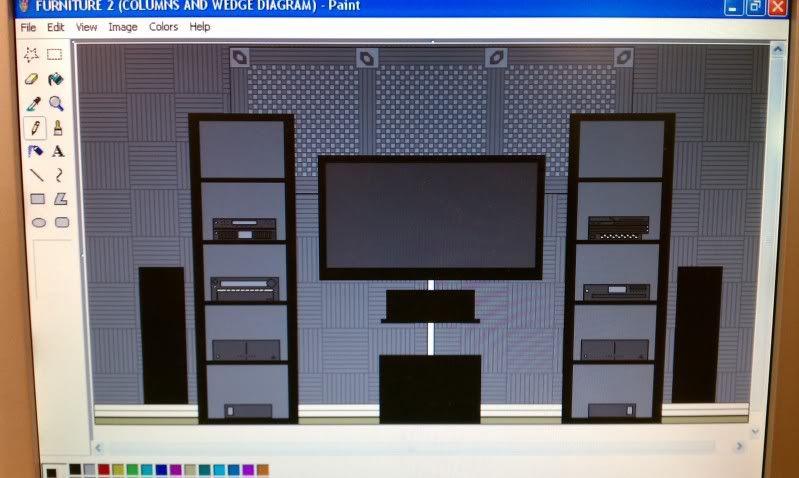
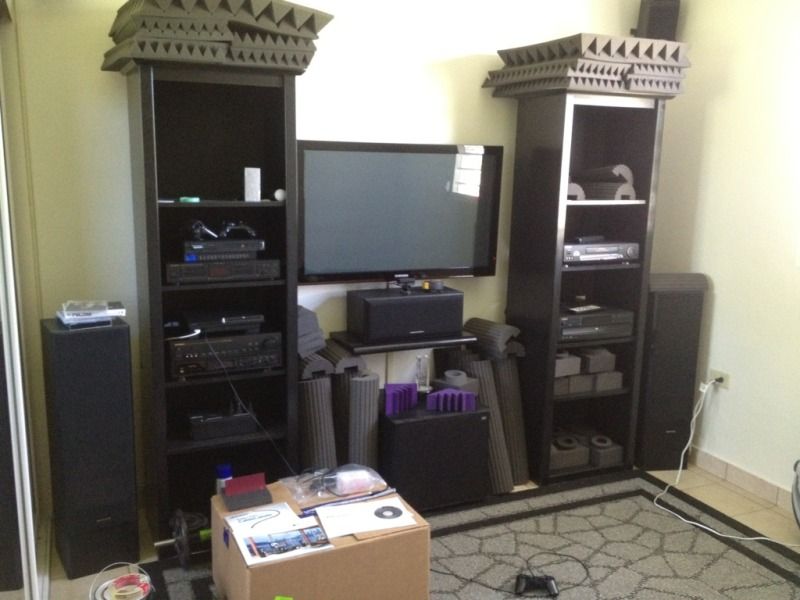


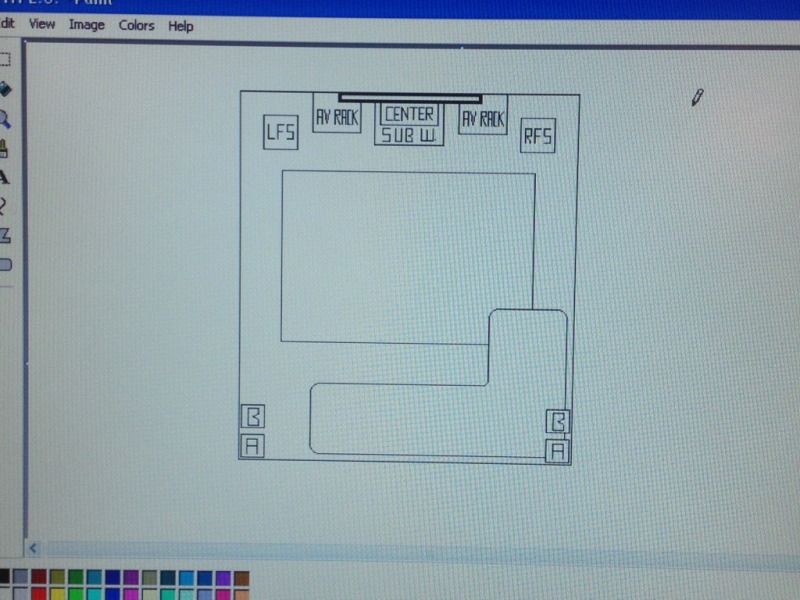
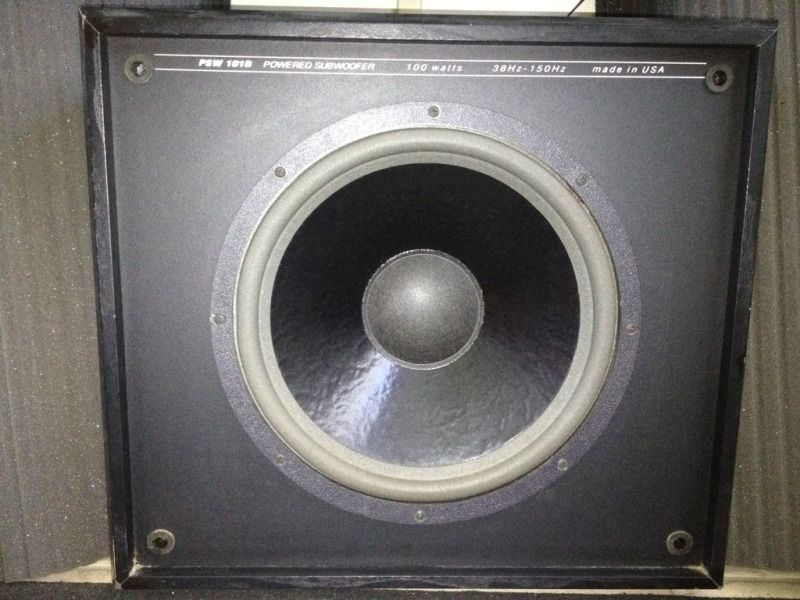
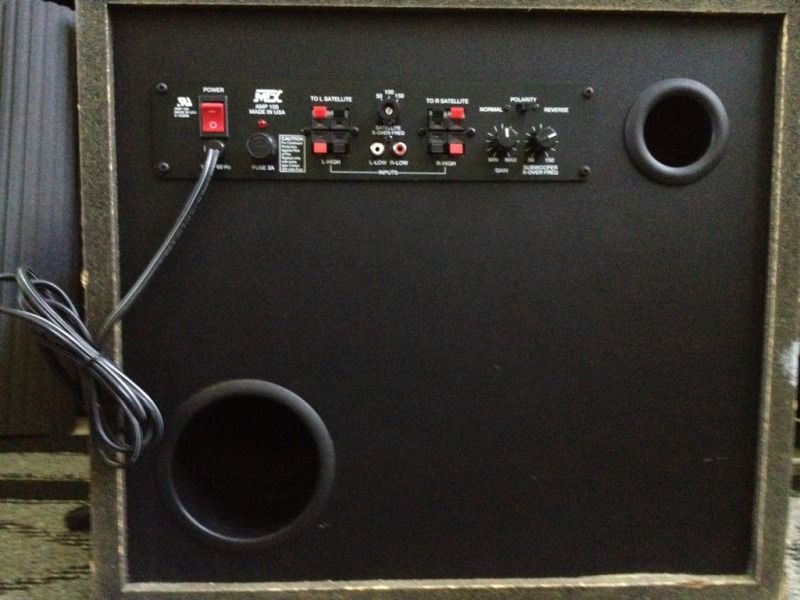
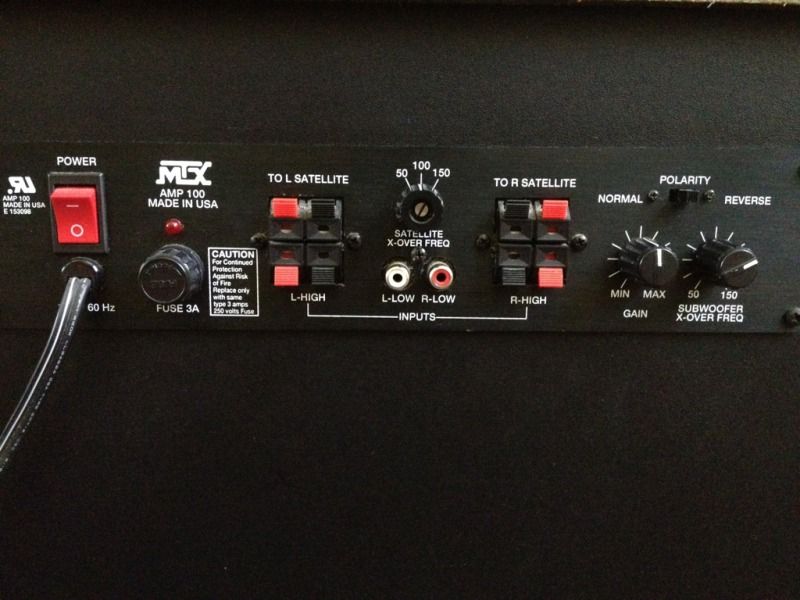
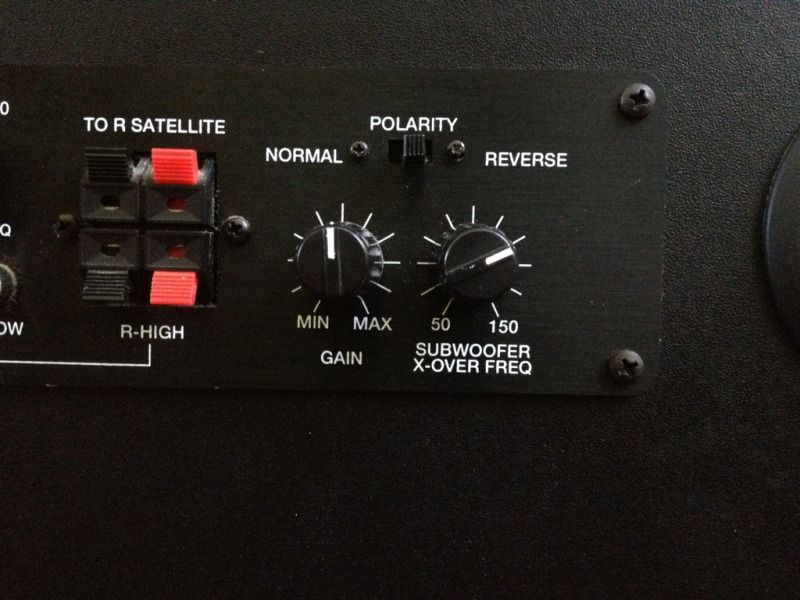
 Linear Mode
Linear Mode

